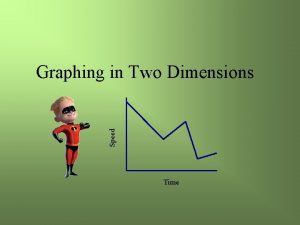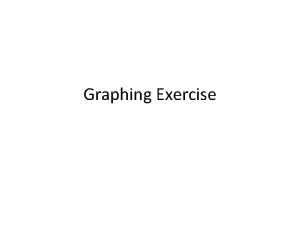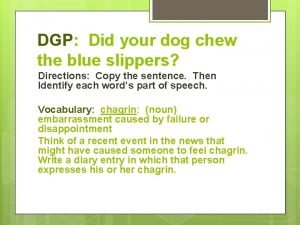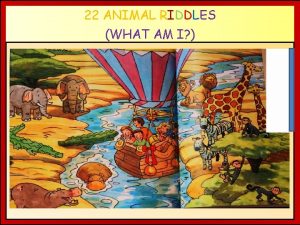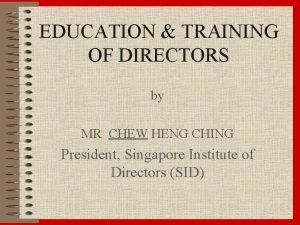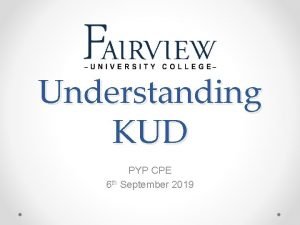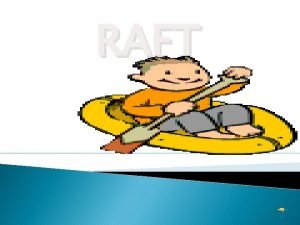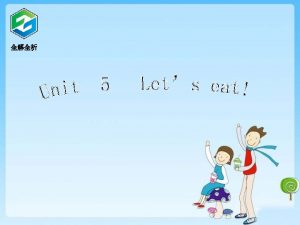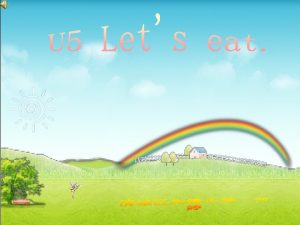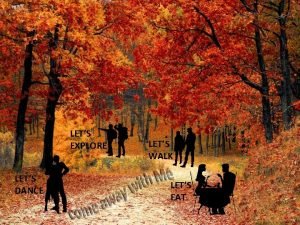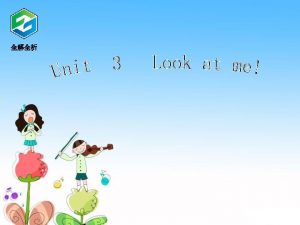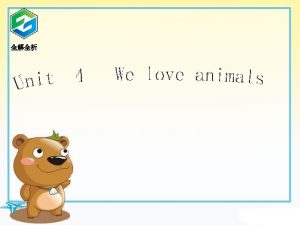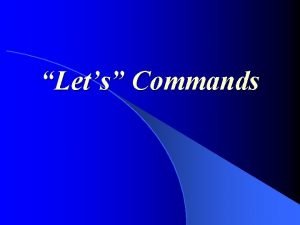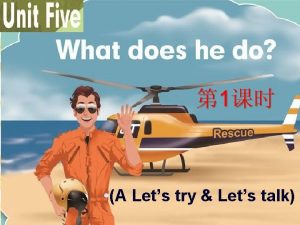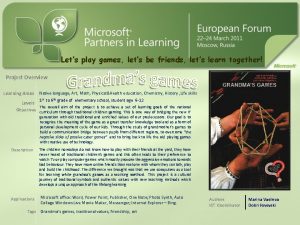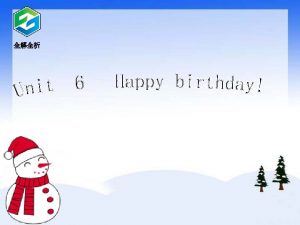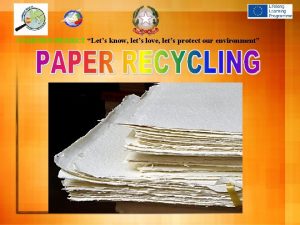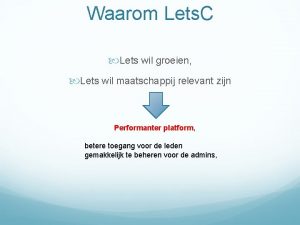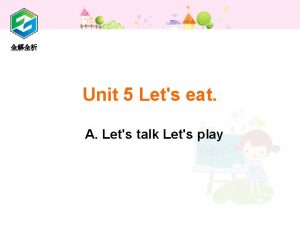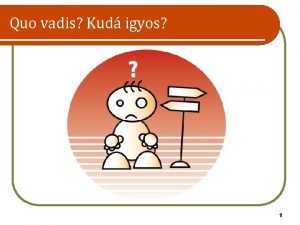First lets chew on the KUD KUD Its































- Slides: 31

First, let’s chew on the KUD. . .

KUD. . . It’s what you will. . . • UNDERSTAND • KNOW -what Differentiation is -where you can use differentiation in your lessons – how to implement types of DI in your own classroom – how ways to differentiate are related • be able to DO: - create two lesson idea’s utilizing an aspect of DI This is also known as unpacking the standard in BSSD speak!

Read the first two pages in your handout about ideas on differentiation. . . - If it’s true, what would I see in the classroom? - What would the teacher be doing? - What would the students be doing?


Learning Profiles • Multiple Intelligences – Gardner • Learning Modalities • Problem Solving Strategies – Sternberg • Personality Characteristics – Array Interaction

How to Create a MI Assignment The Teacher… Nanci Smith • … selects the knowledge, skills and essential understandings that the students are either: • 1) beginning to explore, or • 2) synthesizing and demonstrating mastery of. • … looks at the K-U-Ds and find learning/assessment modes through which students could demonstrate their understanding. • … selects jobs/occupations that are associated with the different learning styles.

How to Create a MI Assignment, cont. Examples … • Visual – Spatial: Artist, Cartoonist, Magazine layout editor • Logical-Mathematical: Architect, Engineer, Mathematician • Interpersonal – Counselor, Tour Guide, Teacher • Musical/Rhythmic: Songwriter, Performing Artist • Verbal-Linguistic: Writer, Commentator, Announcer • Body-Kinesthetic: Actor, Builder • Intrapersonal: Poet, Songwriter, Reflector (Journal) • Naturalistic: Forest Ranger, Botanist

Sternberg’s Three Intelligences Analytical Practical Creative

Examples Across the Curriculum: Analytical Analyze the development of the character of Heathcliff in Wuthering Heights. Critique the design of the experiment (just gone over in class or in a reading) showing that certain plants grew better in dim light than in bright sunlight. Judge the artistic merits of Roy Lichtenstein’s “comic-book art, ” discussing its strengths as well as its weaknesses as fine art. Compare and contrast the respective natures of the American Revolution and the French Revolution, pointing out ways both in which they were similar and those in which they were different. Evaluate the validity of the following solution to a mathematical problem and discuss weaknesses in the solution, if there any. Assess the strategy used by the winning player in the tennis match you just observed, stating what techniques she used in order to defeat her opponent. Nanci Smith

Examples Across the Curriculum: Practical Apply the formula for computing compound interest to a problem people are likely to face when planning for retirement. Use your knowledge of German to greet a new acquaintance in Berlin. Put into practice what you have learned from teamwork in football to making a classroom team project succeed. Implement a business plan you have written in a simulated business environment. Employ the formula for distance, rate, and time to compute a distance. Render practical a proposed design for a new building that will not work in the aesthetic context of the surrounding buildings, all of which are at least 100 years old. Apply a lesson that a literary character learned to your life. Nanci Smith

Examples Across the Curriculum: Creative Create an alternative ending to the short story you just read that represents a different ay things might have gone for the main characters in the story. Discover te fundamental physical principle that underlies all of the following problems, each of which dffers from the others in the “surface structure” of the problem but not in its “deep structure…” Imagine if the government of China keeps evolving over the course of the next 20 years in much the same way it has been evolving. What do you believe the government of China will be like in 20 years? Suppose that you were to design one additional instrument to be played in a symphony orchestra for future compositions. What might that instrument be like, and why? Predict changes that are likely to occur in the vocabulary or grammar of spoken Spanish in the border areas of the Rio Grande over the next 100 years as a result of continuous interactions between Spanish and English speakers. Imagine what it feels like to be a parabola, and describe yourself and your life. Suppose Huck Finn had been named Helen Finn. Nanci Smith

How can we address these differences in class?

Role Audience Format Topic Example RAFT’s

Name: _________________ Period: ______ Date: _____ Partner’s Names: ________________________________________________________________ Due Date: Astronomy Rafts For this assignment you and your partners will choose one of the following assignments. You will work with your partners to create a story that follows the topic and format. All topics can be found in your textbook but a minimum of two other sources is required. Choose your assignments wisely and be very creative. Students will also be responsible for presenting their assignments to the class in a 3 – 8 minute presentation. Role Audience Format Topic Supergiant Star Younger star Dialog A look back at my life Moon Astronauts Advice column What to expect with your visit A galaxy neighboring galaxies Letter of Concern We are growing apart A Planet protoplanets Motivational Speaker You too can be a strong, independent Planet Earth Sun and other planets Ricki Lake Show No I am the Center Sun Tour Guide Sun Tourists Tour guide dialog Add some heat to your life Galaxy Other galaxies Letter to the Editor What is this redshift trying to prove Pluto other planets Petition Why should I be a planet or moon **** Other ideas may be used also. Any other idea besides the listed topics must be approved by Miss Wall. Think creativity!

Sample RAFT Strips Role Audience Format Topic Squanto Other Native Americans Pictographs I can help the inept settlers Band Member Other Band Members Demo Tape Here’s how it goes Positive Numbers Negative Numbers Dating Ad Opposites Attract Rational Numbers Irrational Numbers Song Must you go on forever? Decimals Fractions Poem Don’t you get my point? Perimeter Area Diary Entry How your shape affects me Monet Van Gogh Letter I wish you’d shed more light on the subject! Joan of Arc Self Soliloquy To recant, or not to recant; that is the question Tree Urban Sprawl Editorial My life is worth saving Thoreau Public of his day Letter to the Editor Why I moved to the pond Young Chromosome Experienced Chromosome Children’s Book What becomes of us in mitosis?

RAFT ACTIVITY ON FRACTIONS Role Audience Format Topic Fraction Whole Number Petitions To be considered Part of the Family Improper Fraction Mixed Numbers Reconciliation Letter Were More Alike than Different A Simplified Fraction A Non-Simplified Fraction Public Service Announcement A Case for Simplicity Greatest Common Factor Nursery Rhyme I’m the Greatest! Equivalent Fractions Non Equivalent Personal Ad How to Find Your Soul Mate Least Common Factor Multiple Sets of Numbers Recipe The Smaller the Better Like Denominators in an Unlike Denominators in Additional Problem an Addition Problem Application form To Become A Like Denominator A Mixed Number that Needs to be Renamed to Subtract 5 th Grade Math Students Riddle What’s My New Name Like Denominators in a Subtraction Problem Unlike Denominators in a Subtraction Problem Story Board How to Become a Like Denominator Fraction Baker Directions To Double the Recipe Estimated Sum Fractions/Mixed Numbers Advice Column To Become Well Rounded 5 th Grade Team, Free Rock Elementary, Brighton, NY

Grade 6 Social Studies RAFT The Feudal System Students will Know: Names and roles of groups in the feudal class system. Understand: Roles in the feudal system were interdependent. A person’s role in the feudal system will shape his/her perspective on events. Be Able to Do: Research See events through varied perspectives Share research & perspectives with peers

Feudal Pyramid RAFT Role Audience Format Topic King The Subjects Proclamation Read My Lips, New Taxes Knight Squire Job Description Chivalry, Is it for you? Lord King Contract Let’s Make a Deal Serf Animals Lament Poem My So Called Life Monk Masses Illuminated Manuscript Do As I Say, Not as I Do Lady Pages Song ABC, 123 Following the RAFT activity, students will share their research and perspectives in mixed role groups of approximately five. Groups will have a “discussion agenda” to guide their conversation. Kathryn Scaman

Our Example Rafts. . . ROLE AUDIENCE FORMAT TOPIC Wrist Keyboard Song Stop you are hurting me Student Community skit Problem solving AEC Community brochure Letter E Alphabet Fast track phonics When I am long. . Circles Polygons Dating Ad Why not me? Letter Alphabet Playdough, Skit, sand, writing, What am I? Nickel Penny Simulation, song Why am I not brown?

Proportional Reasoning Think-Tac-Toe Create a word problem that requires proportional reasoning. Solve the problem and explain why it requires proportional reasoning. Find a word problem from the text that requires proportional reasoning. Solve the problem and explain why it was proportional. Think of a way that you use proportional reasoning in your life. Describe the situation, explain why it is proportional and how you use it. Create a story about a proportion in the world. You can write it, act it, video tape it, or another story form. How do you recognize a Make a list of all the proportional situation? proportional situations in Find a way to think about the world today. and explain proportionality. Create a pict-o-gram, poem or anagram of how to solve proportional problems Write a list of steps for solving any proportional problem. Write a list of questions to ask yourself, from encountering a problem that may be proportional through solving it.

Similar Figures Menu Negotiables (Choose 1): 1. Create a book of similar figure applications and problems. This must include at least 10 problems. They can be problems you have made up or found in books, but at least 3 must be application problems. Solve each of the problems and include an explanation as to why your solution is correct. 2. Show at least five different applications of similar figures in the real world, and make them into math problems. Solve each of the problems and explain the role of similarity. Justify why the solutions are correct.

Similar Figures Menu Optionals: 1. Create an art project based on similarity. Write a cover sheet describing the use of similarity and how it affects the quality of the art. 2. Make a photo album showing the use of similar figures in the world around us. Use captions to explain the similarity in each picture. 3. Write a story about similar figures in a world without similarity. 4. Write a song about the beauty and mathematics of similar figures. 5. Create a “how-to” list or book about finding and creating similar figures.

The Maturation of Tom Sawyer Learning Preference The Adventures of Tom Sawyer by Mark Twain Level 1: Level 2: On or Below Grade Level On or Above Grade Level Artist The Writing’s On the Wall You ARE Tom Sawyer. You will create a “Growth Mural” of yourself to give to Becky in order to show her how much you’ve matured. Life is Like a Box of Chocolate Illustrate Tom’s growth or maturation through the use of an extended metaphor or simile that compares Tom’s growth process to _________ Announcer: Hannibal on a Wire Create an audio recording of the scene that you feel was the most important to Tom’s growth. Tommy Goes to Hollywood Create and produce an NPR segment in which the hosts of the show interview Steven Spielberg about his upcoming film adaptation of The Adventures of Tom Sawyer Writer: Growth Report Card You are a psychologist hired by Aunt Polly to examine Tom’s behavior and assess his growth. Investigative Report Develop a Private investigator’s Report about Tom’s emotional and mental growth and wellbeing. Actor: Lights, Camera, Action! Choose an important scene that demonstrates Tom’s growth of character, and act it out using props, costumes, etc. Live with Dr. Phil! Act out an episode of the Dr. Phil show in which characters from the book will discuss whether or not they believe that Tom has grown or changed and how.

• Informal (on going) Assessments: • thumb-o-meter • Give me 5 • Colored Cards (red, green, yellow) Assessment Idea’s • Yes/No Cards • vocab, synonym/antonym, cause/effect, fact/opinion, polygons • Jigsaw Check • Journals • Free Write/Fast write • Exit Cards (3 -2 -1, difference w/ examples) • Graphic Organizers

Cubing Activities © Think. DOTS Nanci Smith

CUBING 1. Describe it: Look at the subject closely (perhaps with your senses as well as your mind) 2. Compare it: What is it similar to? What is it different from? 3. Associate it: What does it make you think of? What comes to your mind when you think of it? Perhaps people? Places? Things? Feelings? Let your mind go and see what feelings you have for the subject. 4. Analyze it: Tell how it is made? What are it’s traits and attributes? 5. Apply it: Tell what you can do with it. How can it be used? 6. Argue for it or against it: Take a stand. Use any kind of reasoning you want – logical, silly, anywhere in between. • • • Or you can. . Rearrange it Illustrate it Question it Satirize it Evaluate it Connect it Cartoon it Change it Solve it

Setting Illustrate the setting of your poem. Use color (markers, pencils) and give your picture a title that is connected to the poem but not the title of the poem Figurative Language Theme Using a graphic Describe theme organizer, list all the of your poem in a paragraph. Check for similes and metaphors in your poem. If you topic sentence, need help finding supporting details metaphors, consult With and conclusion your group members Speaker Describe the speaker of this poem. Be prepared to share orally. Poetry Level I Line Describe the way the lines are arranged Rhyme Figure out the rhyme scheme of the poem. Be prepared to teach it to the class.

Setting Illustrate the setting of your poem. Use color (markers, pencils) and give your picture a title that is connected to the poem but not the title of the poem Theme Figurative Language Compare theme of Tell how the similes your poem to theme and metaphors in your of a story or novel you poem enhance the have read. Use a Venn imagery. Be prepared diagram to show your to share orally. comparison. Speaker How does the speaker feel? Find at least 2 feelings and be prepared to explain orally. Poetry Level II Rhyme Line What does the rhyme Describe the impact scheme have to do the line arrangement with the meaning of has on the poem? Why do Argue convincingly you think the poet In a short paragraph. chose this pattern?

Setting If your poet were an artist, how would he/she express this poem as a picture? Use markers, pencils, etc. to illustrate your answer. Theme Write a short poem to express theme of the poem you have chosen. Choose your own style. Poetry Level III Rhyme Provide other examples Figurative Language Of rhyme or rhythm Write 2 more similes Besides end rhyme used in your poem. and metaphors that How does this add could be added to To the sound of the poem. Poem? Be prepared To share orally Speaker Create another line for this poem that the speaker may have written. Line How would the poet arrange the next lines of this poem if he/she were extending the meaning and theme?

Describe how you would Explain why you need solve a common denominator or roll the die to determine your when adding fractions, own fractions. But not when multiplying. Can common denominators Compare and contrast ever be used when dividing these two problems: fractions? Create an interesting and challenging word problem Nanci Smith A carpet-layer has 2 yards that can be solved by of carpet. He needs 4 feet ___ + ____ - ____. of carpet. What fraction of Roll the fraction die to his carpet will he use? How determine your fractions. do you know you are correct? Diagram and explain the solution to ___ + ___. Roll the fraction die to determine your fractions.

So. . . What is Differentiation? • • Content Process Product Environment • Readiness • Interest • Learning Profile – Multiple Intelligences – Sternberg’s Problem Solving Intelligences – Learning Modalities – Character
 A train pulls into a station and lets off its passengers
A train pulls into a station and lets off its passengers Identifying qualitative graphs
Identifying qualitative graphs Combination syndrome dental
Combination syndrome dental Ng poon chew
Ng poon chew Gabriel chew
Gabriel chew Digestion begins in the when you chew and swallow
Digestion begins in the when you chew and swallow Tabitha chew
Tabitha chew Did your dog chew the blue slippers
Did your dog chew the blue slippers Animal riddles what am i
Animal riddles what am i Chew heng ching
Chew heng ching Dean chew
Dean chew Nicotine patch dosing chart
Nicotine patch dosing chart Walt and wilf learning objectives examples
Walt and wilf learning objectives examples Raft writing template
Raft writing template Kud examples
Kud examples Kud classification verbs
Kud classification verbs Kud bayongbong garut
Kud bayongbong garut The bright filled paperweight
The bright filled paperweight When a train increases its velocity, its momentum
When a train increases its velocity, its momentum Sunny rainy snowy windy cloudy
Sunny rainy snowy windy cloudy If its square its a sonnet summary
If its square its a sonnet summary Its halloween its halloween the moon is full and bright
Its halloween its halloween the moon is full and bright Its not easy but its worth it
Its not easy but its worth it Hát kết hợp bộ gõ cơ thể
Hát kết hợp bộ gõ cơ thể Ng-html
Ng-html Bổ thể
Bổ thể Tỉ lệ cơ thể trẻ em
Tỉ lệ cơ thể trẻ em Chó sói
Chó sói Chụp phim tư thế worms-breton
Chụp phim tư thế worms-breton Hát lên người ơi alleluia
Hát lên người ơi alleluia Môn thể thao bắt đầu bằng từ đua
Môn thể thao bắt đầu bằng từ đua Thế nào là hệ số cao nhất
Thế nào là hệ số cao nhất
